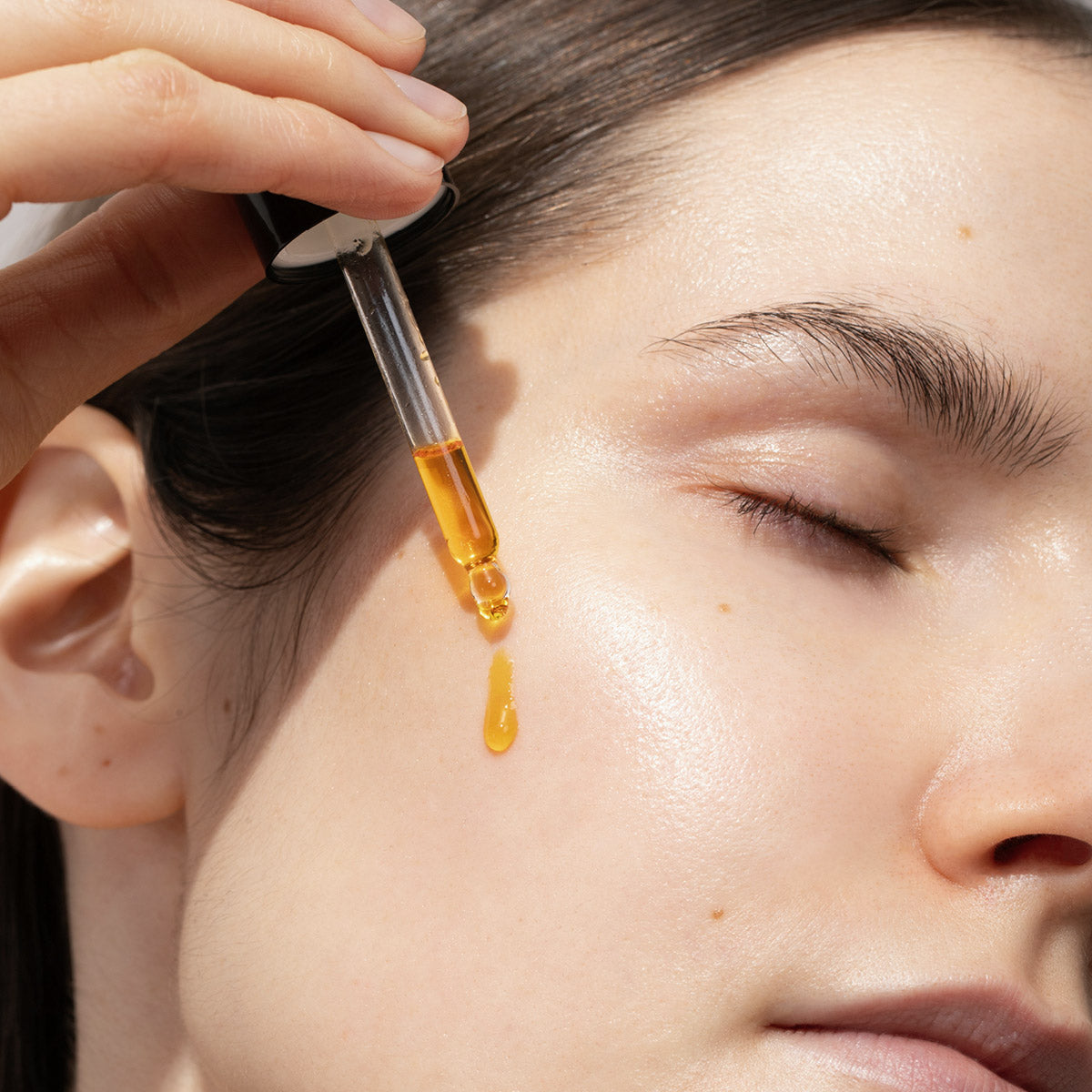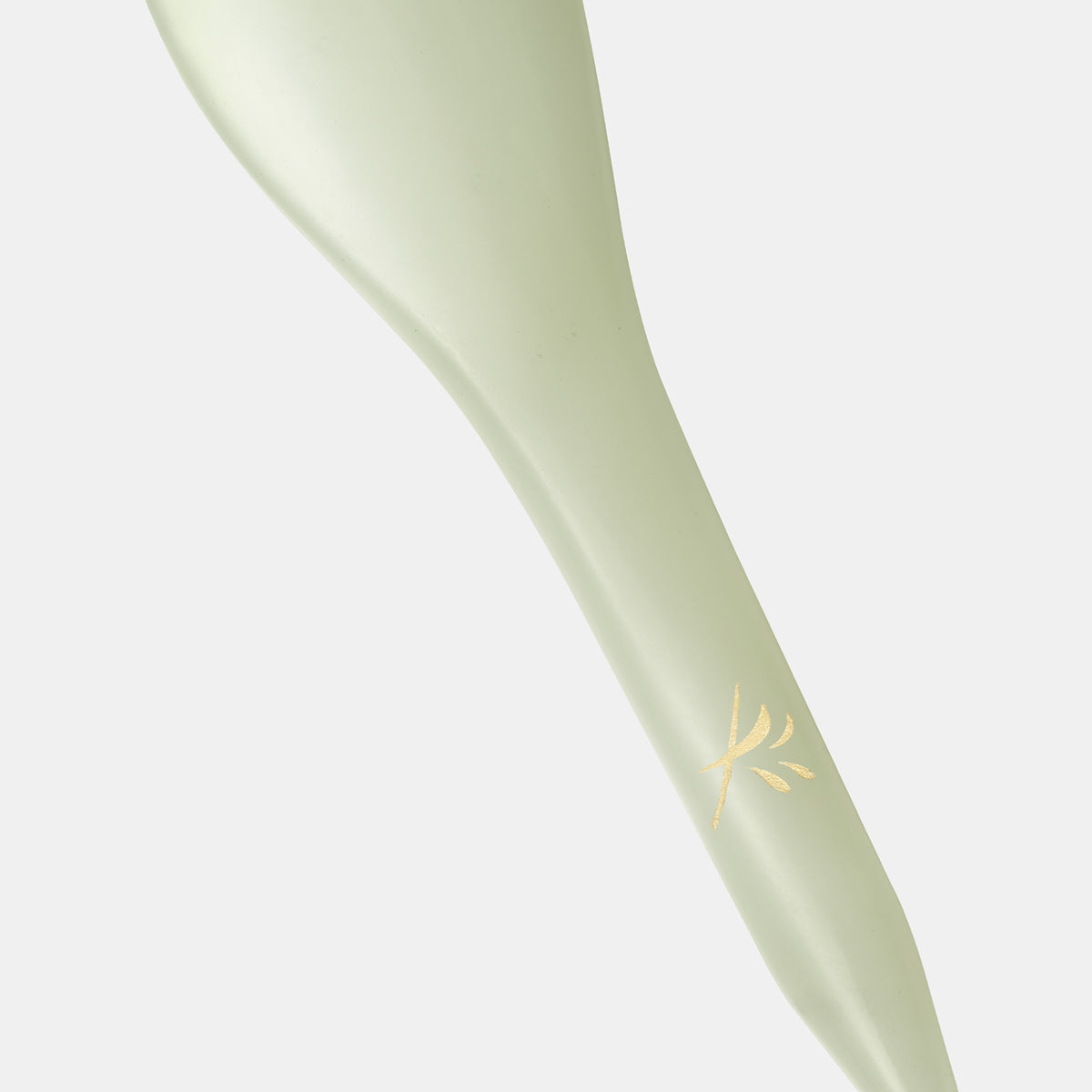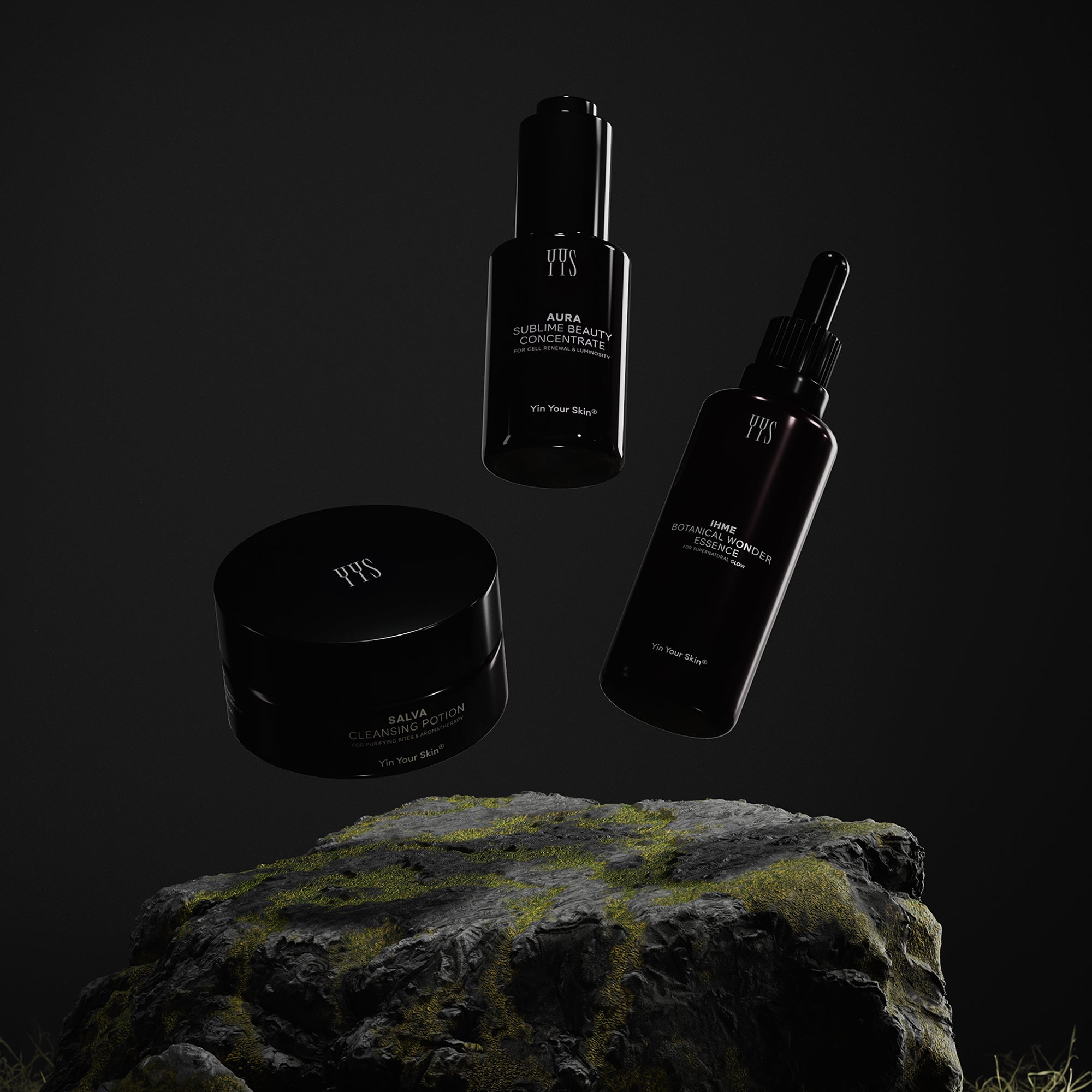How to Evaluate the INCI List of a Moisturizer?
When evaluating a moisturizer, understanding its INCI list is essential for determining its quality and effectiveness. This article breaks down ingredient lists step by step, helping you analyze what truly goes into your skincare products.
Moisturizer is an Emulsion
A moisturizer is always an emulsion, meaning a combination of two immiscible phases (water and oil). There are different types of emulsions: oil in water (o/w) or water in oil (w/o).
The most common type of emulsion is oil in water. This means that the water phase (water and water-soluble substances) makes up the majority of the emulsion, with a smaller proportion of oil and oil-soluble substances. In water in oil emulsions, this ratio is reversed.
Oil in water emulsions are lightweight, while water in oil emulsions are richer. Thick cold creams, very rich moisturizers, and greasy hand creams are examples of water in oil emulsions. However, oil in water emulsions can also be thickened to achieve a richer consistency.
Let’s focus on oil in water emulsions since they are the most common type. We will also consider only emulsions in natural cosmetics.
INCI List and Cosmetic Ingredients
Cosmetic ingredients must be listed in the INCI (International Nomenclature of Cosmetic Ingredients) in descending order of concentration. However, this rule applies only to ingredients present in amounts greater than 1%. Ingredients in amounts lower than 1% can be listed in any order, making it challenging to interpret the INCI list unless one can identify the point where ingredients drop below 1%.
To interpret an INCI list, one must understand the functions of the ingredients in the emulsion base and the typical usage levels. These amounts also vary depending on the formulation—whether it is a very light moisturizer or a richer one.
Base Ingredients of a Moisturizer
The water phase in a product can be around 80-90%. In a light moisturizer, the oil phase may be 10-15%, which includes the oil, oil-soluble substances, and the emulsifier that helps combine water and oil.
The ingredient present in the highest amount is always the solvent. This can be pure water or a floral water. Note that replacing purified water with floral water does not make the product water-free. Floral water is water that contains components of essential oils from distillation. A product is water-free only if it contains exclusively oil-soluble ingredients or is entirely in powder form.
Besides water, solvents like plant-based propanediol can be used to enhance the absorption of active ingredients and provide skin hydration. Propanediol can be synthesized synthetically, but only plant-based propanediol, such as corn-derived, is allowed in natural cosmetics. It is common for a cream base to contain both water and propanediol in amounts of 5-15%.
Purified water can also be complemented with floral water, though it does not have to be entirely replaced due to cost considerations.
After water (and possibly floral water and propanediol), the next ingredient in the INCI list is usually an oil. This can be a whole plant oil or a fractionated plant oil, known as ester oil, in amounts around 10%. Typically, multiple oils are used—often 2-3 different oils—to diversify the fatty acid profile and benefits of the product.
To control costs, a more affordable oil, such as sunflower seed oil or fractionated plant oil (e.g., Caprylic/Capric Triglyceride), is chosen as the main oil, while more expensive oils appear further down the INCI list. Fractionated plant oils are cost-effective and give a silky feel to the product, though they lack the omega fatty acids and antioxidants of cold-pressed plant oils.
Emulsifiers
Almost always, after oils, an emulsifier appears in the INCI list. An emulsifier is a surfactant (surface active ingredient) that allows water and oil to blend. Emulsifiers rarely consist of a single ingredient; they usually include 2-3 different substances or more.
These emulsifier components are spread throughout the INCI list based on their concentration, making interpretation more difficult. A consumer may not recognize emulsifiers from the list, but an experienced formulator can identify them and estimate their usual concentrations. Typically, emulsifiers are used in amounts of 3-5% in moisturizers.
Water, oil, and emulsifiers form the base of a moisturizer. Active ingredients, stabilizers, texture enhancers, thickeners, and preservatives are added to complete the formulation.
Humectants and Active Ingredients
Moisturizers often contain humectants, which bind water to the surface of the skin. These can include glycerin, betaine, or hyaluronic acid. Glycerin is used in amounts around 5-10%, while hyaluronic acid is typically used below 1%.
If plant extracts are included as active ingredients and glycerin is used as a solvent, the total glycerin content in the product increases, which affects its placement in the INCI list.
Plant extracts are common active ingredients in natural cosmetics. They can be extracted in water, glycerin, a combination of both, or another solvent. The strength of plant extracts varies, with the plant content in an extract typically ranging from 2-10%—higher concentrations like 10% are rare.
Active ingredients are usually not listed as single substances in the INCI, as solvents must also be included unless the extract is in a 100% powdered form, in which case lower usage levels apply.
Stabilizers and Thickeners
A stable emulsion must maintain a uniform consistency without water and oil separating. Especially in lighter creams, stabilizers are necessary. They often also adjust the viscosity, or thickness, of the product and are therefore referred to as thickeners.
Thickeners are used in amounts around 1% and can be single ingredients (e.g., xanthan gum) or combinations of several substances, such as Tapioca Starch or Algin. Richer creams may use Cetearyl Alcohol as a thickener, which also functions as an emulsifier.
Preservatives
Preservatives are essential in emulsions to prevent the growth of harmful bacteria, fungi, and yeast, which thrive in water. Preservatives in natural cosmetics are mild, but they are necessary for safety. If a brand claims its product is “preservative-free,” it should be approached with skepticism, as all emulsions require a preservation system. Microbiological testing is mandatory for water-containing products to confirm their safety.
Preservatives are typically used at 1-2% and often come in combinations of two or more ingredients, placing them at the end of the INCI list.
Fragrances
In natural cosmetics, a moisturizer can be fragrance-free or scented with essential oils or fragrance blends made from isolated essential oil components. Fragrance blends are listed as “parfum” in the INCI, while essential oils are labeled with their Latin names.
Essential oils not only provide a pleasant scent adn aromatherapeutic effect but also offer skincare benefits. In contrast, fragrance blends serve only as a scenting agent. Fragrances and essential oils are used at 0.2-1% in leave-on products.
How to Interpret an INCI List in Practice?
In the Cosmile database you can enter the name of any ingredient from an INCI list, and the database will provide its function in cosmetics. This can help in understanding product compositions, but in reality, the interpretation is much more complex. Additionally, the database does not always provide precise information on the origin of all ingredients.
Now, let’s analyze three different moisturizers. The names of the brands of the first two products are not mentioned, but the third one is Yin Your Skin Elo Serum-Cream.
Example 1:
INCI:
Aqua (Water), Cetearyl Alcohol, Helianthus Annuus (Sunflower) Seed Oil, Butyrospermum Parkii (Shea Butter), Coco-Caprylate/Caprate, Glycerin, Prunus Armeniaca (Apricot) Kernel Oil*, Sesamum Indicum (Sesame) Seed Oil*, Candelilla/Jojoba/Rice Bran Polyglyceryl-3 Esters, Glyceryl Stearate, Parfum (Fragrance), Punica Granatum (Pomegranate) Seed Oil*, Argania Spinosa (Argan) Kernel Oil*, Sodium Hyaluronate, Aloe Barbadensis Leaf Juice Powder*, Dipalmitoyl Hydroxyproline, Cetearyl Glucoside, Sodium Stearoyl Lactylate, Tocopherol, Lactic Acid, Dehydroacetic Acid, Xanthan Gum, Sodium Levulinate, Sodium Anisate.*
This moisturizer contains two emulsifiers. The main emulsifier is likely composed of: Candelilla/Jojoba/Rice Bran Polyglyceryl-3 Esters, Glyceryl Stearate, Cetearyl Alcohol, and Sodium Stearoyl Lactylate.
The recommended usage of this emulsifier is 4-6%. Since the first component appears early in the INCI list, this suggests a significant proportion. However, Cetearyl Alcohol might also serve as a thickener, as it is the first oil-phase ingredient.
Additionally, a co-emulsifier has been used, composed of: Cetearyl Glucoside, Cetearyl Alcohol, and Water. Its recommended usage as a co-emulsifier is 1-3%. Typically, this ingredient is used as a co-emulsifier, which supports the assumption about the main emulsifier.
Co-emulsifiers enhance skin feel and stability. In Yin Your Skin formulation approach, we prefer to avoid co-emulsifiers.
Oil Phase Composition:
- Organic sunflower seed oil
- Organic shea butter
- Fractionated plant oil (Coco-Caprylate/Caprate)
- Plus emulsifiers and other plant oils
Following these, glycerin appears as a humectant, along with small amounts of organic sesame and apricot kernel oils.
After this, two main emulsifier components appear in the list, and then we reach the fragrance, which suggests we are nearing the 1% threshold. The fragrance used here is a perfume blend instead of essential oils.
There are some good ingredients at the ends of the list, such as moisturizing hyaluronic acid and Dipalmitoyl Hydroxyproline, which is a firming active ingredient. There is very little pomegranate seed oil and argan oil, as they appear after the fragrance.
Final Evaluation:
- The oil phase is relatively basic.
- The price is €40 for a 60ml jar.
- This formula represents a standard-quality base rather than a high-performance formulation.
Example 2:
INCI:
Aqua (Water), Rosa Damascena Flower Water, Glycerin, Alcohol Denat., Helianthus Annuus (Sunflower) Seed Oil, Coco-Caprylate, Glyceryl Stearate Citrate, Microcrystalline Cellulose, Caprylic/Capric Triglyceride, Coco-Caprylate/Caprate, Parfum (Fragrance), Cetearyl Alcohol, Sodium Hyaluronate, Engelhardtia Chrysolepis Leaf Extract, Taraxacum Officinale (Dandelion) Rhizome/Root Extract, Angelica Archangelica Callus Extract, Glyceryl Caprylate, Sodium Stearoyl Glutamate, Limonene*, Levulinic Acid, Vigna Aconitifolia Seed Extract, Chondrus Crispus (Carrageenan) Powder, Sclerotium Gum, Sodium Levulinate, Cellulose Gum, Xanthan Gum, Tocopherol, Pentylene Glycol, Sodium Phytate, Maltodextrin, Sodium Hydroxide, Linalool***, Citronellol***
This formula contains organic rose water alongside purified water as a solvent.
Oil Phase Composition:
- Non-organic sunflower seed oil
- Fractionated plant oils (Coco-Caprylate, Caprylic/Capric Triglyceride, Coco-Caprylate/Caprate)
Emulsifiers Used:
- Glyceryl Stearate Citrate, Cetearyl Alcohol, Glyceryl Caprylate
- This emulsifier blend is typically used at 3-6%.
- Sodium Stearoyl Glutamate (acts as an co-emulsifier).
Additional Ingredients:
- Microcrystalline Cellulose & Cellulose Gum (improve skin feel and texture)
- Usually present above 1%.
- Perfume blend used as fragrance.
Final Evaluation:
- Hyaluronic acid and botanical extracts provide added benefits.
- The price is €85.90 for 50ml, but the oil phase consists mainly of inexpensive plant oils, fractionated oils and texture enhancers.
- Poor price-to-quality ratio.
Example 3: Yin Your Skin Elo
INCI:
Rosa Alba Flower Water, Aqua, Oenothera Biennis Oil*, Glycerin***, Propanediol**, Plankton Extract, Hippophae Rhamnoides Extract*, Glycine Soja Seed Extract, Carthamus Tinctorius Seed Oil, Avena Sativa Kernel Extract, Medicago Sativa Sprout Extract*, Tocopherol, Rhodiola Rosea Root Extract, Spilanthes Acmella Flower/Leaf/Stem Extract, Rosmarinus Officinalis Leaf Extract, Astragalus Membranaceus Root Extract, Ubiquinone, Daucus Carota Sativa Seed Oil*, Michelia Alba Flower Oil, Benzyl Alcohol, Benzyl Benzoate****, Limonene****, Geraniol****, Leuconostoc/Radish Root Ferment Filtrate, Cyamopsis Tetragonoloba Gum, Dehydroacetic Acid, Xanthan Gum.*
The solvent used in this product, in addition to water, is organic white rose water, which is present in a greater amount than purified water, as it appears first in the INCI list.
The oil phase consists of organic evening primrose seed oil, which is a high-cost oil and, for this reason, is usually found only in the later part of INCI lists, similar to pomegranate seed oil and argan oil in the cream from Example 1.
The third ingredient is glycerin. Since we know the product’s formula, we can confirm that glycerin was not added primarily as a humectant (even though it does provide moisture). Instead, glycerin functions as a solvent for the rhodiola root extract contained in the product, as well as the second ingredient in the emulsifier system.
The fourth ingredient is plant-derived propanediol, which serves as a solvent, provides hydration to the skin, and enhances the absorption of active ingredients.
Following this, the next ingredients in the list are plankton extract and organic sea buckthorn oil.
Then comes the second emulsifier ingredient, Glycine Soja Seed Extract (soy extract). This is a highly unique emulsifier, as it not only emulsifies but also functions as an active ingredient that firms the skin and enhances the absorption of other ingredients. The recommended usage level for this emulsifier is 3-5%.
This emulsifier allows the cream to be produced using a cold-process method. In other words, the product does not need to be heated at any stage during production. This ensures that antioxidants and omega fatty acids retain their full potency. Normally, the emulsification process requires heat, making this a significant advantage.
After the emulsifier, the next ingredient is Carthamus Tinctorius Seed Oil (safflower oil). This is not something that can be determined just by looking at the list, but we know from the formulation that this oil functions as a solvent for a complex of active ingredients in the product, consisting of paracress, astragalus, and ubiquinone. This complex makes up 3% of the total formulation.
The magical 1% threshold in this product is at Tocopherol (Vitamin E).
The product does not contain ingredients that modify skin feel. For stability enhancement, Cyamopsis Tetragonoloba Gum and Xanthan Gum have been used, with a combined concentration of less than 1%.
The product is scented with carrot seed and magnolia essential oils, both of which not only provide fragrance but also have beneficial effects on the skin.
The cream base itself, including the emulsifier, is designed to be nourishing, and premium ingredients have been selected. Additionally, high-performance active ingredients have been incorporated generously, without cost-cutting measures.
The price of this product is €98 for a 50ml container. In this case, the cost reflects the quality and effectiveness of the formulation.
Key differences:
- The first ingredient is organic white rose water, meaning it is the primary solvent rather than purified water.
- The oil phase consists of premium ingredients
Emulsifier used:
- Glycine Soja Seed Extract acts both as an emulsifier and an active ingredient, which firms the skin and enhances absorption.
- This emulsifier allows the cream to be cold-processed, meaning the product is never heated during production.
1% threshold:
- The 1% threshold is at tocopherol (Vitamin E).
- No texture-enhancing fillers are used.
- Stability is improved with Cyamopsis Tetragonoloba Gum and Xanthan Gum (both under 1%).
- The product is scented with carrot seed and magnolia essential oils, which also provide skincare benefits.
Final Evaluation:
- Rich in high-quality ingredients, including expensive oils and high-performance actives.
- €98 for 50ml—price reflects quality and effectiveness.
Final Thoughts
We hope this breakdown helped you understand the composition of moisturizers and provided some tips on interpreting INCI lists. However, as you’ve probably noticed, INCI interpretation is complex and requires deep knowledge of formulation. If you're not familiar with ingredient functions and their typical usage levels, decoding an INCI list accurately can be challenging.





